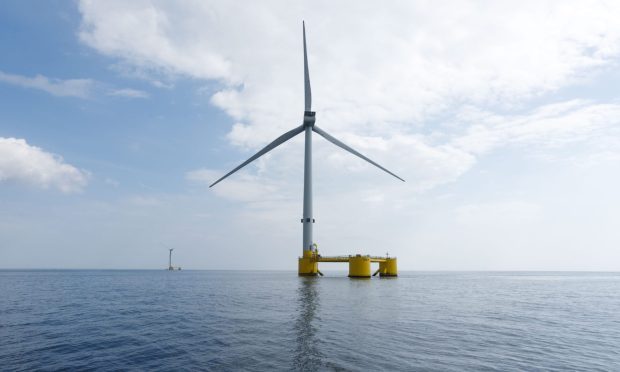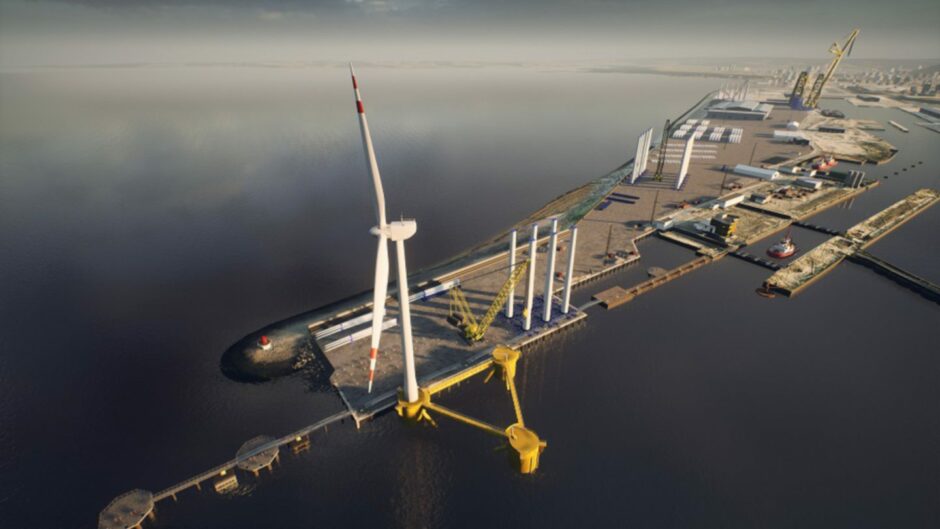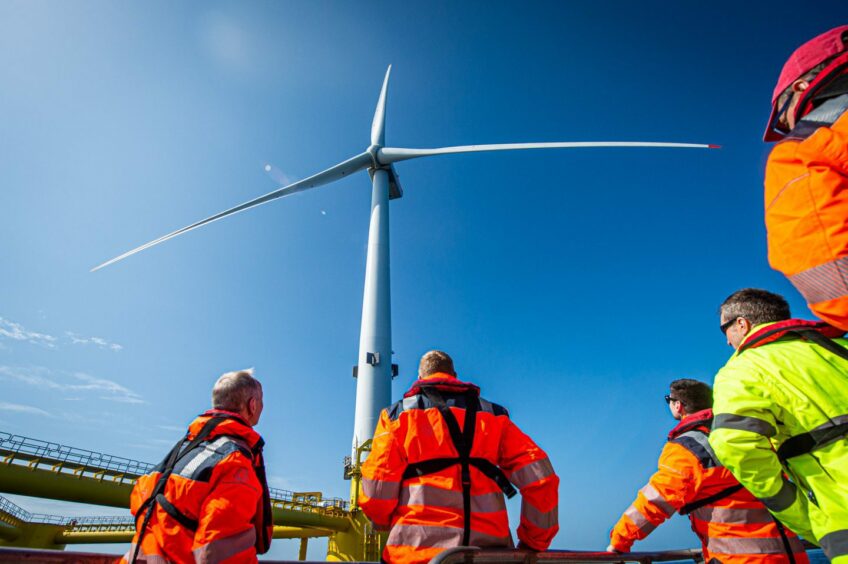As surging demand for floating wind sees components towed around the world, registering their foundations as ships could unlock a host of benefits for ports and developers.
The Kincardine floating wind farm off Aberdeen – until recently the largest such scheme in the world – has already secured its place in history thanks to its pioneering achievements. Yet little-known paperwork behind the scenes could have important implications for future developments.
The five WindFloat units bobbing off the Granite City are in fact registered as ships, an experiment in classification understood be the first of its kind anywhere in the world.
Critical to the venture was Addleshaw Goddard partner and maritime expert Ed Watt, who worked with the scheme’s developers to help mobilise the project in 2018.
“They said: ‘Here’s a challenge for you. We’re building some floating offshore wind semi-submersible structures in Spain and we need to get them into the UK for the site east of Aberdeen.’
“The question arose whether they would need some kind of certification to allow them to be towed inwards from the Netherlands where they were being integrated.”
An expert in navigating the registration process for a plethora of vessels – be they submarines, flying boats, ROVs or “anything in between” – Mr Watt relished the challenge.
“I said: I bet we can register these things as ships. I knew that because I had seen conventional semi-submersible oil and gas rigs routinely registered as ships.”
Stable and seaworthy
“Many people would say: why do you have to do this?” Mr Watt ventured. “The answer is if you want to tow them in from somewhere else, you need a certificate that says that they’re seaworthy and that’s what registration as a ship gives you.”
While floating assets are commonplace across oil and gas developments in the form of rigs and FPSOs, the wind sector has thus far largely used fixed-bottom foundations. These too make international journeys, but are typically loaded onto barges or installation vessels and treated as cargo.
Once safely in place and secured firmly to the seabed, they also pose fewer headaches for developers and insurers.
Floating substructures – whether they are mated with turbine towers or not – demand a little more reassurance.
There are other “collateral benefits” to the approach, chiefly in a developer being able to secure conventional marine insurance for the structures rather a new or bespoke – read: expensive – policy created specifically for floating wind.
Structure concerns
In the case of Kincardine, components were built in Spain and assembled in the Netherlands, before each structure was towed across the North Sea as a single unit.
It was less the crossing of international boundaries that raised eyebrows, and more the potential consequences of any disaster.
“The main concern for the Kincardine floater was stability,” Mr Watt explained, highlighting the need to reassure not just Scottish port authorities but harbourmasters in Rotterdam and Navantia too.
“While we thought that the certification to approve the towage of the structure from the foreign yard into UK waters was the main target, the other thing which was a consequence of that certification was the ability to get conventional marine insurance for the floater.
“That meant we could exhibit wreck removal cover to these port authorities, who were terrified that thing was going to fall over and block their waterway.”
In this case, the Marshall Islands Ship Registry was chosen for the Kincardine WindFloat structures, with classification given by the American Bureau of Shipping (ABS).
This recording also provides extra reassurance to all involved.
“It helps evidence title apart from anything else,” said Mr Watt. “With any equipment you see, one of the questions in both an insolvency situation and for taking security over it is how we know who owns it. If you’re registered in a public register, you can say ‘that’s mine’ – like registering your house or a parcel of land.”
Local content implications
Ship registrations are unlikely to be a prerequisite for all floating developments; the need is largely negated if the semi-sub foundations are manufactured in the country in which they are be used.
“If they were built in the Cromarty Firth and towed out for use in UK territorial waters then you wouldn’t need these international certificates because the vessel was not performing an international voyage,” clarified Mr Watt.
But with 13 of the 20 ScotWind projects based on floating blueprints, the requirement to build and marshal hundreds of structures in UK waters over the next decade. And while big plans are afoot at yards such as Ardersier and others to produce concrete foundations, there will be a seemingly inevitable requirement for some foreign manufacturing.
“The challenge for many developers may be the lack of available shipyard facilities, infrastructure and lay down sites to actually fabricate in this country, which means that the majority of the floating foundations we see in the next five or ten years will more likely than not be built elsewhere.”
Freedom of movement is also beneficial for O&M, as Kincardine’s turbines have this far required to be towed back to the Netherlands for repairs owing to a lack of capability in UK ports – currently something of a sore spot given the government’s stated ambitions.
“It’s immeasurably beneficial to them to have to have a certificated vessel that, when it breaks down…they can tow straight away to Rotterdam for repair instead of having to obtain certificates from a third party,” says Mr Watt.
This too will change as local capacity builds. Kincardine Offshore Windfarm Limited (KOWL) itself told Energy Voice earllier this year that work is already underway to ensure local firms are deployed to fix repairs in situ, not least because transportation to the Netherlands is costly.
However, at a regional level the flexibility offered by designation as a vessel is still likely to prove essential as hundreds of turbines soon spread out across UK and European waters.
No way around it?
Are national flagging bodies equipped to deal with a wave of thousands of new ship registrations?
Mr Watt does not foresee any capacity constraints on the ability of ship registries to cope with such an influx – even if they were to be concentrated among a handful of likely candidates.
And while he recognises there is an added layer of cost and administration, the process itself is “relatively quick and simple and is not document-heavy, nor are the application papers lengthy to prepare and submit.”
As such, the “routine and repeatable” process could become an essential part of mobilisation.
Future processes are also likely to be easier thanks to dedicated class notation for floating wind now provided by the likes of DNV and ABS.
Crucially, there may be few other solutions that will enable the nascent sector to meet its expectations.
“I can’t think of another way around the dilemma than the one which we found for Kincardine,” he said.
“On the contrary, I suspect demand for registration of floating turbine structures will increase – not least since that we’ve proved the concept – but because they are destined to come into this country from elsewhere.”



